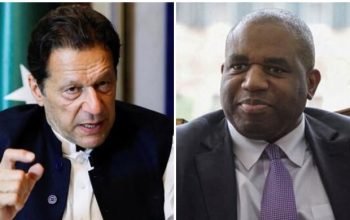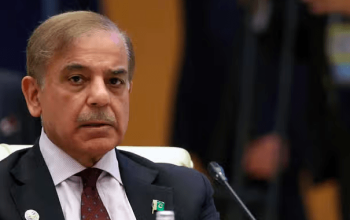The real task of budget makers was to present policy prescriptions that adhere to the broader contours of the International Monetary Fund (IMF). Apparently, the IMF has given a green signal, and the budget is good to go, pending last-minute tweaks to appease coalition partners. Indeed, the budget poses a significant challenge for tax collectors, with a focus on expanding the revenue base by removing exemptions, targeting real estate, and tightening regulations for non-filers.
The government’s biggest challenge lies on the fiscal side, where problems have been identified. The immediate task at hand should be to maintain a current account balance or surplus to avoid taking on new additional dollar loans. Similarly, achieving a primary surplus (revenue minus expenditure excluding interest payments) is also aimed at ensuring living within means. This exercise is necessary to focus on growing exports, promoting sustainable growth, reducing inefficiencies, eliminating subsidies, reducing debt burden, and attracting foreign investments.
It’s essential to note that this is the first year’s budget of the Pakistan Peoples’ Party (PPP)-supported the Pakistan Muslim League-Nawaz (PML-N) government under the new IMF programme. Three to four more budgets along similar lines will be prepared by the economic team in line with the IMF’s bailout plan. There is absolutely no margin for error, as the tax-to-GDP ratio needs to exceed 14-15% to adequately fund education, healthcare, infrastructure, and value addition.
Unfortunately, provinces seem to have completely disregarded the taxation of large landowners in agriculture and the services sector. They have no incentive whatsoever to contribute under the current National Finance Commission (NFC) award, which aimed to increase the Federal Board of Revenue (FBR) tax revenues to 15%. Unless the affluent, ruling elite, assembly members, affluent policymakers, and privileged individuals pay their fair share (or even half of that), the country, or more precisely, the poor people, cannot expect their fortunes to improve within their lifetimes.
Nevertheless, the budget was innovative and penalising for non-filers. Apart from much heftier taxes on real estate transactions, the extra 5% FED on plot trading would curb the parking of wealth into dead capital and encourage construction activities if plot prices remain cheaper. Similarly, if non-filers are not allowed foreign travel, have their SIM cards and gas/electricity connections disconnected, this should force them to comply with filing and documenting their wealth. The implementing authorities are to be heavily fined if they fail to track it. Again, enforcement is the key to achieving the revenues.
By increasing taxes on cell phones, hybrid and electric vehicles (EVs), cars based on their value rather than engine size, the stock market, real estate, and non-filer retailers, wholesalers, distributors, and dealers, the Government of Pakistan (GoP) has shown its intent to redistribute the tax burden. However, this could strain the middle class, necessitating significant pay raises to maintain their standard of living.
Macroeconomically, the 3.6% GDP growth target is probably going to be missed and is close to the population growth rate. Therefore, life may not improve significantly. Nevertheless, a 1% primary surplus, 6.9% fiscal deficit, 12% inflation rate, and FBR 12.9T tax revenues are ambitious targets. We may hope that international oil prices remain stable so that a year-end inflation reading of 9-10% could lead to further 5-6% interest rate cuts to 14-15%, thereby providing relief to the government, borrowers, industries, and investors.
While removing the tax arbitrage on corporate investments in sovereign debt instruments via mutual funds, the exchequer has rightly ended this anomaly, costing billions of rupees. Ideally, this should translate into a 30-50% increase in “quality” education and healthcare services. Buyers in the real estate market would think twice before parking wealth now, as a new category of late filers is introduced. The imposition of FED on residential (once) and commercial plots (every time) trading, along with increased non-filer tax rates on purchases to 12-20% and sales to 10%, with a progressive taxation regime, aims to discourage tax evasion.
The stock market remains a lucrative avenue for investment, despite the flat 15% capital gains tax, regardless of the holding period. Cash-rich companies with low tax arbitrage may not be compelled to seek growth projects amid falling interest rates and after-tax fixed income earnings. Buying before June 30th makes one eligible for a 0% CGT after six years, and the underperformance of real estate could lead to wealth diversion to the stock market.
Hence, overall, a fairly optimistic case is being developed post-budget once the IMF bailout is secured, credit ratings improve, foreign exchange reserves increase, further lending and debt rollover are seen, structural reforms to contain circular debt and grow the tax base are undertaken, privatisation of loss-making Pakistan International Airlines (PIA) and DISCOs is accelerated, and lastly, if non-filers conversion along with the nabbed retail sector achieves its objectives, Pakistan may be at an inflection point of growth, again. Let’s not miss this opportunity once again.
THE WRITER IS AN INDEPENDENT ECONOMIC ANALYST
Read the full story at the express tribune website.


